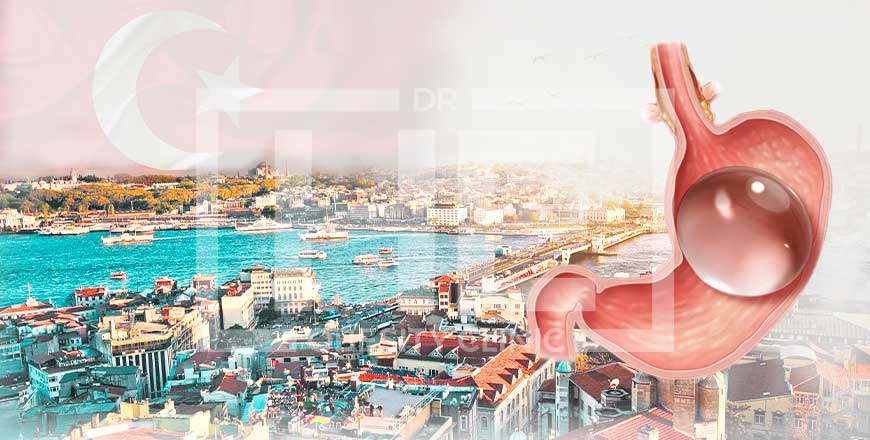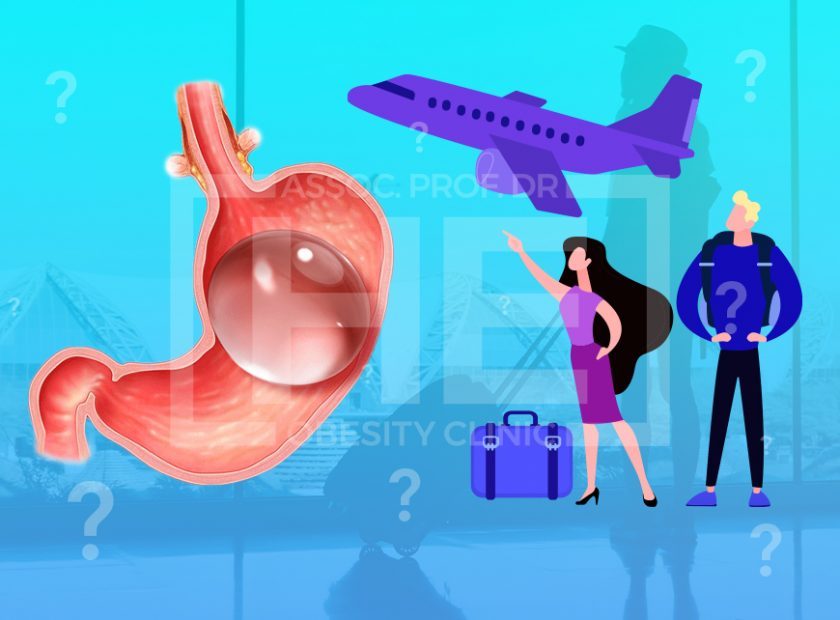
Spatz Balloon, spatz 3 balloon, spatz balloon cost, spatz balloon price, spatz gastric balloon, spatz adjustable gastric balloon, spatz balloon diet, spatz balloon side effects. Since its introduction 15 years ago, the gastric balloon has been used successfully in Europe and Asia as a clinically proven method of reducing excess weight.
Spatz Balloon
Spatz Balloon is a weight-loss device that is filled with saline and implanted in the stomach for up to eight months. Spatz Balloon occupies space in the stomach, making the person eat less and feel full faster. The volume of the Spatz Balloon can be increased or decreased during the eight-month period. This way, the weight-loss results can be improved or the discomfort caused by the balloon can be reduced. Spatz Balloon is inserted and removed endoscopically.
Spatz Balloon has been used worldwide since 2012. As of March 2021, more than 76,000 balloons have been implanted outside of the US. Spatz Balloon is the only adjustable gastric balloon approved by the FDA. Spatz Balloon is designed for adults with a Body Mass Index (BMI) of 30.0 to 40.0 kg/m2 who have failed to achieve and maintain weight loss with a supervised weight control program. Spatz Balloon should be used for up to eight months along with a long-term diet and behavior modification program. This program helps to increase the long-term weight loss maintenance.
The effectiveness of the Spatz Balloon has been proven by clinical trials. In a study, Spatz Balloon was implanted in 187 patients for up to eight months. Ninety-two percent (92%) of the patients who received the device lost at least 5% of their total body weight and on average lost 15.0% of their body weight2. Patients who did not receive the device lost 3.3% of their body weight on average. All patients in the clinical study (those who received the device and those who did not receive the device) received a moderate-intensity lifestyle counseling program.
Spatz Balloon may have some side effects. These include nausea, vomiting, abdominal pain, reflux, gas, diarrhea, constipation, headache, muscle pain, fatigue, depression, anxiety, and insomnia. These side effects usually decrease or go away within the first few days. However, in some cases, the volume of the balloon may need to be reduced or removed early. Spatz Balloon may also cause serious complications such as stomach ulcer, stomach bleeding, stomach perforation, balloon leakage or rupture, bowel obstruction, infection, allergic reaction, or death. These complications are rare, but may require emergency medical intervention.
Spatz Balloon is not a suitable option for everyone. People with previous gastrointestinal surgery complications, inflammatory bowel disease, stomach or intestinal ulcer, Crohn’s disease, cancer or other bowel diseases should not use Spatz Balloon. Also, people with pregnancy, breastfeeding, alcohol or substance addiction, eating disorder, psychiatric illness, or bleeding disorder are not eligible candidates for Spatz Balloon. You should talk to your doctor before using Spatz Balloon and evaluate all the risks and benefits.
Spatz Balloon is an innovative and adjustable device that can help you lose weight and adopt a healthy lifestyle. However, Spatz Balloon is not enough by itself. You should follow a balanced diet, regular exercise, and behavior modification program along with Spatz Balloon. Spatz Balloon teaches you the ways of losing and maintaining weight, but applying them is your responsibility. Spatz Balloon offers you a new start, but you need to be determined and motivated to succeed.
Spatz 3 Balloon
The Spatz3 Adjustable Balloon System is a revolutionary non-surgical weight loss solution that has been gaining attention in the medical community. This innovative device offers a unique approach to weight management by providing a safe and effective way to help individuals achieve their weight loss goals.
In the world of weight loss, there are countless methods and products that promise to help individuals shed unwanted pounds. From fad diets to extreme exercise regimens, the options can be overwhelming and often ineffective. However, a new and innovative solution has emerged in the form of the Spatz 3 Balloon.
What is the Spatz 3 Balloon?
The Spatz 3 Balloon is a cutting-edge, non-surgical weight loss solution that has been designed to help individuals achieve their weight loss goals in a safe and effective manner. Unlike traditional weight loss methods, the Spatz 3 Balloon does not require invasive surgery or lengthy recovery times. Instead, it is a minimally invasive procedure that involves the placement of a soft, silicone balloon in the stomach.
How Spatz3 Gastric Balloon Works?
The Spatz 3 Balloon works by taking up space in the stomach, which helps individuals feel full faster and stay full longer. This can lead to reduced food intake and ultimately, weight loss. The balloon is inserted into the stomach through the mouth using an endoscope, and once in place, it is filled with a sterile saline solution. The entire procedure typically takes less than 30 minutes and can be performed on an outpatient basis.
The Spatz3 gastric balloon is a non-surgical weight loss option that has been gaining popularity in recent years. This innovative procedure involves the insertion of a silicone balloon into the stomach, where it is then filled with saline solution to create a feeling of fullness and reduce hunger. The balloon remains in place for a period of time, typically 12 months, and is then removed.
The Spatz3 gastric balloon works by taking up space in the stomach, which in turn reduces the amount of food that can be consumed. This leads to a decrease in caloric intake and ultimately results in weight loss. The balloon also helps to promote a feeling of fullness, making it easier for individuals to adhere to a reduced-calorie diet.
One of the key advantages of the Spatz3 gastric balloon is its adjustability. Unlike traditional gastric balloons, the Spatz3 can be filled with varying amounts of saline solution, allowing for personalized adjustments to optimize weight loss results. This flexibility sets the Spatz3 apart from other gastric balloons and makes it a preferred option for many patients.
The procedure to insert the Spatz3 gastric balloon is minimally invasive and is typically performed on an outpatient basis. After the balloon is inserted, patients are closely monitored to ensure that they are adapting well to the changes in their eating habits. Throughout the duration of the balloon placement, patients receive ongoing support and guidance from a team of healthcare professionals to help them achieve their weight loss goals.
In addition to promoting weight loss, the Spatz3 gastric balloon has been shown to have positive effects on overall health. Many patients experience improvements in conditions such as high blood pressure, type 2 diabetes, and sleep apnea as a result of their weight loss. These health benefits make the Spatz3 an attractive option for individuals who are looking to not only lose weight but also improve their overall well-being.
It’s important to note that the Spatz3 gastric balloon is not a standalone solution for weight loss. In order to achieve and maintain long-term results, individuals must commit to making lifestyle changes, including adopting a healthy diet and engaging in regular physical activity. The Spatz3 gastric balloon is most effective when used as part of a comprehensive weight loss program that addresses both the physical and psychological aspects of obesity.
As with any medical procedure, there are potential risks and side effects associated with the Spatz3 gastric balloon. These may include nausea, vomiting, abdominal pain, and discomfort. However, these symptoms are typically temporary and subside as the body adjusts to the presence of the balloon. It’s important for individuals considering the Spatz3 gastric balloon to thoroughly discuss the potential risks and benefits with their healthcare provider.
The Spatz3 gastric balloon offers a non-surgical approach to weight loss that has been shown to be effective for many individuals. With its adjustability, minimally invasive procedure, and potential for improving overall health, the Spatz3 is a compelling option for those seeking a non-surgical weight loss solution. As with any weight loss intervention, it’s important for individuals to carefully consider their options and work closely with their healthcare team to determine the best approach for achieving their weight loss goals.
What sets the Spatz 3 Balloon apart?
One of the key features that sets the Spatz 3 Balloon apart from other weight loss solutions is its adjustability. Unlike traditional gastric balloons that are filled with a fixed amount of saline, the Spatz 3 Balloon can be adjusted after it has been placed in the stomach. This means that healthcare providers can tailor the balloon to each individual’s needs, ensuring optimal results.
In addition to its adjustability, the Spatz 3 Balloon is designed to remain in the stomach for an extended period of time. While traditional gastric balloons must be removed after six months, the Spatz 3 Balloon can remain in place for up to 12 months. This extended duration allows individuals to benefit from ongoing support and guidance as they work towards their weight loss goals.
Is it Spatz 3 Balloon safe?
The safety of the Spatz 3 Balloon has been demonstrated in numerous clinical studies and real-world applications. The balloon is made from high-quality, medical-grade silicone and is designed to withstand the acidic environment of the stomach. Additionally, the adjustable nature of the balloon allows healthcare providers to closely monitor each patient’s progress and make any necessary adjustments to ensure safety and effectiveness.
Who is a good candidate for the Spatz 3 Balloon?
The Spatz 3 Balloon may be an ideal option for individuals who have struggled to lose weight through diet and exercise alone. It is particularly well-suited for those who have a body mass index (BMI) between 30 and 40 and are motivated to make lasting lifestyle changes. As with any weight loss intervention, it is important for individuals to consult with a healthcare provider to determine if the Spatz 3 Balloon is the right choice for them.
The benefits of the Spatz 3 Balloon
There are numerous benefits associated with the Spatz 3 Balloon, including:
– Effective weight loss: Clinical studies have shown that individuals who undergo treatment with the Spatz 3 Balloon experience significant weight loss.
– Non-surgical: Unlike other weight loss procedures, the Spatz 3 Balloon does not require invasive surgery or incisions.
– Adjustable: The ability to adjust the balloon allows for personalized treatment and ongoing support.
– Reversible: If necessary, the Spatz 3 Balloon can be easily removed at any time.
– Supportive: Throughout the treatment period, individuals receive guidance and support from healthcare providers to help them achieve their weight loss goals.
The Spatz 3 Balloon represents a groundbreaking advancement in the field of weight loss. Its innovative design, adjustability, and safety profile make it an attractive option for individuals seeking a non-surgical solution to achieve lasting weight loss. As with any medical intervention, it is important for individuals to consult with a healthcare provider to determine if the Spatz 3 Balloon is right for them. With its potential to transform lives and improve health, the Spatz 3 Balloon offers hope for those struggling with obesity and excess weight.
You can regain control of your weight with the adjustable Spatz intra-gastric balloon system, a non-surgical weight loss treatment.
Following a diet and professional-managed behavior change program aids in achieving and maintaining the health and aesthetic benefits of weight loss.
The Spatz intra-gastric balloon has a unique feature that makes it possible to adjust the balloon volume (volume) and 1-year application (implantation) period, which is impossible with other balloons.
Similar weight loss procedures frequently demand (require) a BMI of 40 or higher. The only prerequisite for the Spatz intragastric balloon procedure is a BMI of 27 or higher. This method is a practical weight loss option for people who are not good candidates for bariatric surgery and other similar treatments.
Spatz balloon therapy offers the patient a safer, more affordable way to lose weight than gastric bypass, gastric cuff, or sleeve gastrectomy surgery. It also includes behavioral modification and dietary counseling.
Spatz is the first intragastric balloon that is both adjustable and authorized (allowed) for one-year insertion and administration.
After the initial insertion (administration), the balloon’s volume can be changed while it’s still inside the stomach, thanks to the retractable/stretchable silicone inflation tube.
It can successfully stop early intolerance by draining the balloon’s liquid.
When weight loss is stagnant, this can be fixed by filling the balloon with fluid.
This function is crucial for comfort and long-term weight loss.
The lengthy implantation period causes an unusually high rate of weight loss because non-adjustable balloons lose their appetite-suppressing effects after 3 to 4 months. But it is possible to lose a lot of weight thanks to a unique mix of adjustability and balloon volume (long implantation).
Other saline gastric balloons approved in the US can only be kept in the stomach for a maximum of 6 months; the Spatz can be kept there for an additional eight months.
In their FDA trial, the Spatz balloon significantly outperformed all other gastric balloons, whether saline or gas-filled, in terms of weight loss and long-term success.
The stomach balloon is inserted, adjusted (if necessary), and removed using an endoscope without surgery using only mild sedatives. The Spatz balloon might be ideal for patients who want their therapy to last longer. The likelihood that the patient will lose weight and experience a more stable change in eating behavior increases with the time the balloon remains in the stomach. The longer the balloons stay in the stomach, the more possible it is that the person will change their eating habits and have a lasting impact.
Spatz Balloon Cost
The cost of the Spatz Adjustable Balloon System can vary depending on a variety of factors, including the specific needs of the patient and the provider. It’s important to note that the cost of the Spatz balloon may include not only the device itself, but also the medical procedures and support services that are necessary for its successful implementation.
Spatz Balloon Price
Similarly, the price of the Spatz Adjustable Balloon System can also vary based on individual circumstances. It’s essential to consult with a qualified healthcare professional to receive an accurate assessment of the total price, as well as to discuss any potential financing options or insurance coverage that may be available.
The Spatz3 Adjustable Balloon System offers a comprehensive approach to weight management that includes personalized support and guidance throughout the entire process. This includes pre-procedure consultations, the insertion and removal of the balloon, as well as ongoing monitoring and support to help individuals achieve long-term success.
Spatz Balloon Diet
The Spatz3 Balloon Diet is a comprehensive program that combines the use of the gastric balloon with a structured diet and lifestyle modifications to help individuals achieve their weight loss goals. If you are considering the Spatz3 Balloon System as a weight loss option, here is a detailed guide on how the program works and what you can expect.
The Spatz Balloon Diet Plan
In addition to the placement of the gastric balloon, the Spatz3 Balloon Diet includes a structured diet plan that is designed to support weight loss and promote healthy eating habits. The diet plan typically focuses on consuming smaller portion sizes, making nutritious food choices, and incorporating regular physical activity into your daily routine.
It is important to follow the dietary guidelines provided by your healthcare provider to maximize the benefits of the Spatz3 Balloon System. Additionally, you will receive ongoing support and guidance to help you make sustainable lifestyle changes that contribute to long-term weight management.
Throughout your experience with the Spatz3 Balloon Diet, you will receive ongoing monitoring and support from your healthcare provider. Regular follow-up appointments will be scheduled to track your progress, address any concerns or questions, and make any necessary adjustments to your treatment plan.
Adjusting the Spatz Balloon
One of the unique features of the Spatz3 Balloon System is its adjustability. Unlike traditional gastric balloons that are fixed in size once placed, the Spatz3 balloon can be adjusted to accommodate individual needs and optimize weight loss outcomes. Periodic adjustments may be made by your healthcare provider based on your progress, tolerance to the balloon, and overall weight loss goals.
The process of adjusting the balloon involves adding or removing saline solution through a small port located just under the skin. This can be done during a quick office visit and does not require any additional invasive procedures. The ability to customize the size of the balloon sets the Spatz3 system apart from other weight loss interventions and allows for personalized care throughout your weight loss journey.
Benefits of the Spatz Balloon Diet
The Spatz Balloon Diet offers numerous benefits for individuals looking to achieve their weight loss goals. Some of the key benefits include:
1. Effective Weight Loss: Clinical studies have shown that individuals who undergo the Spatz Balloon procedure experience significant weight loss, with many patients achieving their weight loss goals within the 12-month period.
2. Non-Surgical Approach: Unlike traditional weight loss surgeries, the Spatz Balloon procedure is non-surgical and minimally invasive, reducing the risks and recovery time associated with more invasive procedures.
3. Long-Term Support: Throughout the 12-month period, patients receive ongoing support and guidance from a team of healthcare professionals, helping them to make sustainable lifestyle changes and maintain their weight loss results.
4. Improved Health Outcomes: In addition to weight loss, many individuals experience improvements in their overall health, including reductions in blood pressure, cholesterol levels, and risk of obesity-related health conditions.
Spatz Balloon Side Effects
ne of the most common side effects of the Spatz balloon is nausea and vomiting. This is typically experienced in the first few days after the balloon is inserted and can last for several days. Some patients may also experience abdominal pain and discomfort as their body adjusts to the presence of the balloon.
In some cases, the Spatz balloon can cause more serious complications such as gastric ulcers or perforation of the stomach lining. These complications may require surgical intervention to correct and can be life-threatening if not addressed promptly.
Another potential side effect of the Spatz balloon is balloon deflation or migration. This occurs when the balloon moves from its original placement in the stomach or deflates prematurely, which can reduce its effectiveness in aiding weight loss.
It is important for individuals considering the Spatz balloon procedure to be aware of these potential side effects and to discuss them with their healthcare provider. In some cases, the benefits of the procedure may outweigh the risks, but it is important to make an informed decision based on individual health status and risk factors.
In addition to the potential side effects of the Spatz balloon, it is important to consider the long-term implications of the procedure. While the balloon may aid in short-term weight loss, maintaining weight loss and overall health requires long-term lifestyle changes including diet and exercise.
It is also important to note that the Spatz balloon is not a standalone solution for weight loss. It should be used as part of a comprehensive weight loss program that includes dietary and behavioral changes, as well as ongoing support from healthcare professionals.
Before undergoing the Spatz balloon procedure, individuals should undergo a thorough evaluation by a healthcare provider to determine if they are a suitable candidate for the procedure. This may include an assessment of overall health, previous weight loss attempts, and commitment to long-term lifestyle changes.
While the Spatz balloon can be an effective tool for some individuals in their weight loss journey, it is important to be aware of the potential side effects and risks associated with the procedure. Individuals considering the Spatz balloon should have a thorough discussion with their healthcare provider to weigh the potential benefits and risks and make an informed decision about their weight loss journey.
Is the Spatz Balloon Diet Right for You?
The decision to undergo the Spatz Balloon procedure is a personal one that should be made in consultation with a healthcare professional. Ideal candidates for the Spatz Balloon Diet may include individuals who:
– Have a body mass index (BMI) between 30 and 40
– Have struggled to achieve weight loss through diet and exercise alone
– Are committed to making long-term lifestyle changes to support their weight loss goals
The Spatz – Adjustable Gastric Balloon: Why Use It?
The only adjustable gastric balloon, Spatz, enables our patients to lose weight more successfully. This allows patients to develop healthier eating orders that provide weight loss after the balloon is taken out and learn how to read their body’s signals.
Thanks to Spatz’s unique adjustability feature, patients have experienced almost twice as much weight loss and the highest success rates of any other gastric balloon.
How Does A Gastric Balloon That Adjusts Work?
During a quick, non-invasive outpatient procedure, the Spatz Adjustable Gastric Balloon is implanted. There is no need for hospitalization or incisions. It is a walk-in, walk-out procedure for weight loss.
On average, one in ten patients cannot tolerate the gastric balloon procedure. The Spatz’s volume-down adjustment enables us to lessen this intolerance and keep the gastric balloon in place. Other non-adjustable balloon systems require a removal procedure for patients who are intolerant to the balloon, preventing them from finishing their treatment. You have the highest chance of losing weight successfully with the Spatz.
Consequently, this approach provides the coziest and most adaptable weight loss therapy.
Am I a good candidate for Spatz Balloon?
With the help of gastric balloons, more than 100,000 people have lost weight over the past 30 years, averaging 10 to 30 kg per person—your drive and readiness to adhere to dietary and behavioral changes.
Your success with the Spatz Adjustable Balloon ultimately depends on your ability to modify it.
Spatz Adjustable Balloon implantation is not permitted for patients with specific medical conditions. A licensed doctor must be consulted before deciding whether to receive gastric balloon therapy.
What distinguishes the Spatz balloon from other intragastric balloons?
The intragastric balloon Spatz has several benefits.
- It can be changed as your needs and appetite change because it is adjustable, making it dynamic.
- It has a one-year approval period for implantation—the first balloon with these two benefits.
Longer balloon retention without changing the balloon’s volume is unlikely to result in more significant weight loss. You have more time to change your behavior thanks to the longer implantation time, which results in longer-lasting behavioral changes.
Can I lose a lot of weight using the gastric balloon?
You must realize that the intragastric balloon is a weight-loss aid and must be used with a behavior change program, diet, and physical activity. How closely you stick to your diet and make long-term lifestyle changes will determine how much weight you lose and maintain. With the Spatz stomach balloon, average weight losses of 16 kg over six months have been documented. Over a year, the Spatz balloon has been reported to cause average weight losses of 25 kg.
How long will recovery take following the procedure?
You should schedule at least three days of rest following the procedure. Depending on how quickly your body adapts to the stomach balloon, you can resume regular activity earlier or later than this.
Can I eat anything I want? Are there any dietary restrictions?
You will want to eat less than you once did. Additionally, you might feel sick if you eat sugary or fatty foods. While the gastric balloon is in place, excessive overeating can be dangerous.
Will I feel that there is balloon in my stomach?
For the first few days following the procedure, you might experience discomfort. After that, the intragastric balloon may cause you to feel full, heavy, bloated, or nothing at all if you overeat.




